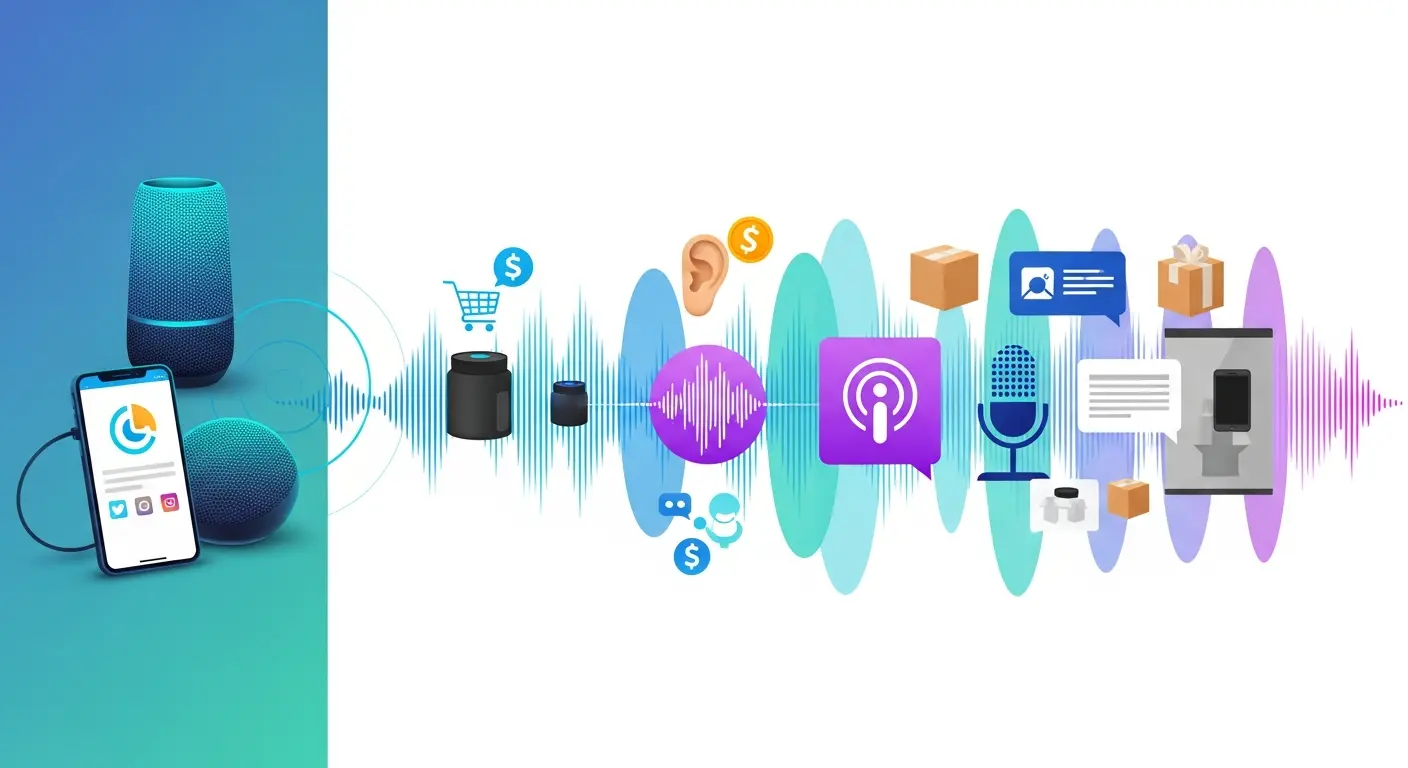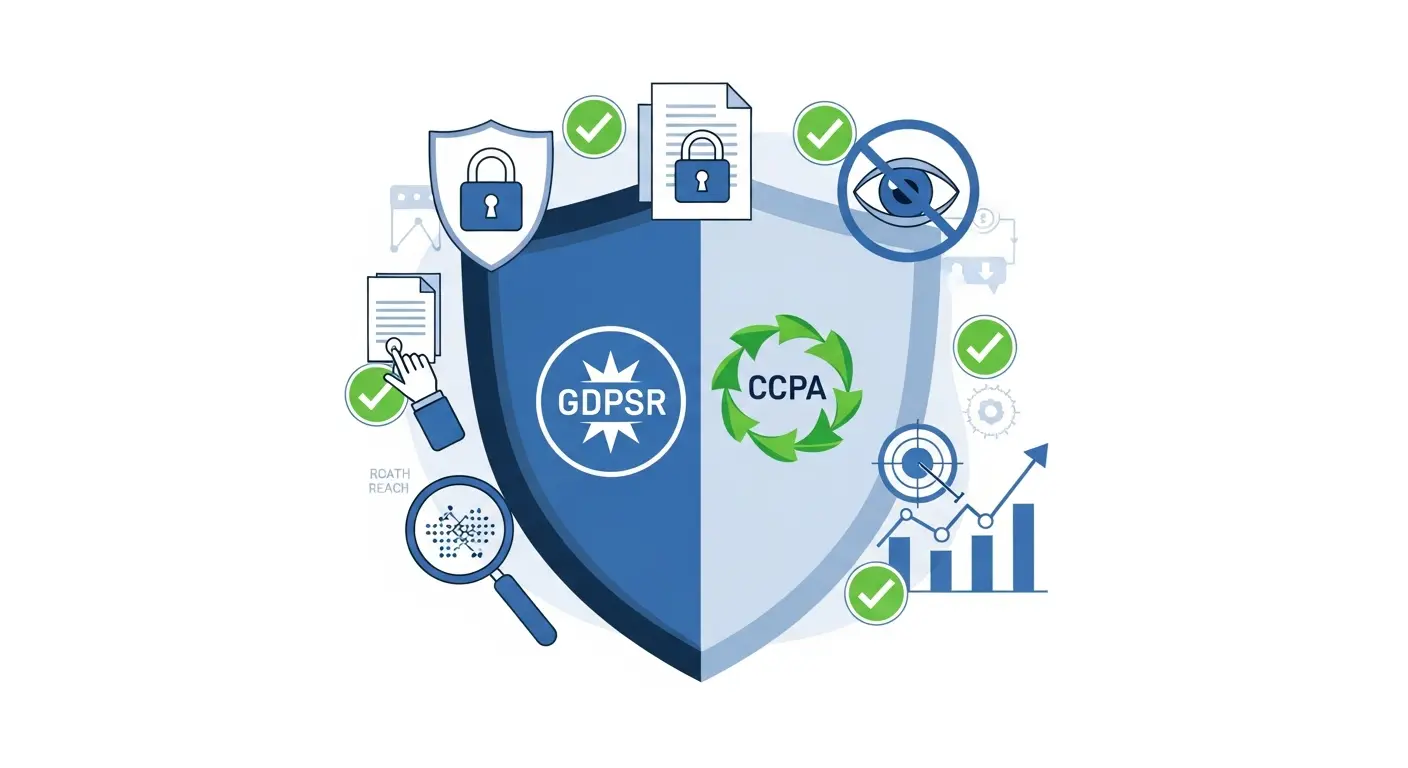Voice Search and Audio Advertising: Emerging Opportunities
The way we interact with technology is fundamentally changing. The keyboard, once the primary gateway to the digital world, is increasingly making way for a more natural, intuitive interface: our voice. From asking a smartphone for directions to telling a smart speaker to play a favorite playlist, voice-first interactions are becoming deeply embedded in our daily routines. For publishers, this seismic shift isn't just a novelty; it represents one of the most significant emerging opportunities for audience engagement and revenue generation since the dawn of mobile. The "audio revolution" is here, and it's time to listen closely.
This comprehensive guide will explore the burgeoning landscape of voice search and audio advertising. We will delve into the critical trends, from the rise of voice commerce to the dominance of podcasting, and provide actionable strategies for publishers to capitalize on this sonic boom. We'll cover the technical nuts and bolts of implementation, best practices for optimization, and the common pitfalls to avoid as you navigate this new auditory frontier. For publishers looking to stay ahead of the curve and unlock powerful new revenue streams, understanding and mastering the world of audio is no longer optional—it is essential.
The Sonic Boom: Understanding the Audio-First Landscape
The move toward an audio-first digital experience is not a future prediction; it's a present-day reality driven by powerful consumer trends and technological advancements. The proliferation of smart speakers from Amazon, Google, and Apple has placed voice assistants in millions of homes, while the ubiquity of smartphones means a powerful voice assistant is in nearly every pocket.
Consider the data painting this new landscape:
- Voice Search is Mainstream: Over a third of the U.S. population uses voice search features regularly, with forecasts predicting that number will continue its steep climb. Users are moving beyond simple queries to ask complex, conversational questions, seeking immediate and authoritative answers.
- Smart Speaker Adoption: In 2023, nearly 100 million U.S. adults own a smart speaker. These devices are becoming central hubs for media consumption, smart home control, and, increasingly, for commerce.
- Podcast Listenership Soars: Over 42% of Americans aged 12 and over have listened to a podcast in the last month. This highly engaged audience offers a uniquely intimate environment for advertising, with podcast ad spending projected to exceed $2.5 billion in the coming year.
For publishers, these statistics signal a clear and urgent call to action. Your audience is already using their voice to find information, consume content, and make purchasing decisions. If you aren't optimizing your content and monetization strategies for this audio-first world, you're not just missing an opportunity—you're risking becoming unheard and invisible to a growing segment of the market.
Monetizing the Mic: Key Opportunities for Publishers
Capitalizing on the audio trend requires a multi-faceted approach. It's not just about one tactic but about building a holistic strategy that integrates voice and audio across your content and revenue operations. Here are the four pillar opportunities publishers must explore.
1. Voice Search & SEO for Audio
Before you can monetize audio, you need to be discoverable. Voice search engine optimization (VSEO) is the foundational layer. When a user asks, "Alexa, what are the best ways to improve ad revenue?" or "Hey Google, explain header bidding," the voice assistant provides a single, direct answer, often read aloud from a top-ranking source. Becoming that source—achieving "Position Zero"—is the goal.
- How it Drives Revenue: While VSEO doesn't generate direct ad revenue, its impact is profound. It drives significant organic traffic to your site, establishes your brand as a trusted authority, and builds the top of your audience funnel. This increased traffic and authority directly boosts the value of your entire ad inventory, from display ads to video ads.
- Implementation & Best Practices:
- Target Conversational Queries: Shift your keyword strategy from short, choppy phrases to long-tail, question-based queries that mimic natural speech (e.g., "how to" "what is," "best way to").
- Utilize Schema Markup: Implement
Speakableschema on your articles. This markup explicitly tells search engines which parts of your content are best suited for being read aloud by text-to-speech (TTS) services. - Create FAQ Content: Develop robust FAQ pages and Q&A-style blog posts that directly answer the questions your audience is asking.
- Optimize for Speed and Mobile: Voice searches demand immediate answers. A fast-loading, mobile-friendly site is a prerequisite for ranking in voice results.
2. Podcast Advertising: The Intimate Medium
Podcasting offers one of the most direct and effective ways to monetize an audio audience. The relationship between a podcast host and their listeners is uniquely intimate and built on trust. Ads delivered in this environment feel less like interruptions and more like genuine recommendations.
- Monetization Models:
- Host-Read Ads: The host reads an ad script in their own voice, often adding personal anecdotes. These command high CPMs due to their authenticity and effectiveness.
- Programmatic Audio Ads: These are ads that are automatically inserted into podcast episodes, often based on listener data. They offer scale and efficiency, similar to programmatic display advertising.
- Technical Implementation: Dynamic Ad Insertion (DAI): The most advanced way to manage podcast ads is through DAI. Unlike "baked-in" ads that are permanently part of the audio file, DAI allows you to insert different ads into the same episode over time. This means you can target ads based on the listener's location, the date they are listening, and other factors. It keeps ad inventory fresh and maximizes revenue for your entire back catalog, not just new episodes. This technology is a cornerstone of modern podcast monetization.
- Best Practices:
- Maintain Authenticity: Whether host-read or programmatic, ensure ads are relevant to your audience and align with your brand's voice.
- Clear Calls to Action (CTAs): Voice is a transient medium. Make your CTAs simple and memorable, such as a unique vanity URL or a specific promo code (e.g., "Visit example.com/podcast" or "Enter code PODCAST25 at checkout").
3. Smart Speaker Monetization: Beyond the Flash Briefing
Having a presence on platforms like Amazon Alexa and Google Assistant is becoming the new "having an app." Publishers can create "Skills" (on Alexa) or "Actions" (on Google) to deliver their content directly through smart speakers. This could be a daily news "flash briefing," an audio version of an article, or an interactive audio experience.
- Monetization Models:
- Audio Ads within Skills: Just as you run ads on your website, you can run pre-roll, mid-roll, or post-roll audio ads within your custom skill. This is a direct way to monetize your smart speaker audience.
- Premium Content & Subscriptions: Offer a free version of your skill with ads, and allow users to subscribe for an ad-free experience or to unlock exclusive premium content (e.g., bonus podcast episodes, in-depth audio documentaries). Platforms like Amazon offer In-Skill Purchasing (ISP) to facilitate these transactions.
- Voice Commerce (V-commerce): Leverage your content to drive affiliate sales. For example, a publisher reviewing products could include a voice command like, "Alexa, ask [Publisher Name] to add that product to my cart." You earn a commission on the resulting sale, creating a seamless path from content to conversion.
- Getting Started: Developing a skill requires using platforms like the Alexa Skills Kit (ASK) or Google's Action Builder. While it can be a technical undertaking, the potential for creating a deeply engaging and monetizable channel is immense.
4. The Rise of Programmatic Audio Ads
Programmatic audio is the automation of buying and selling audio ad inventory across a range of digital platforms, including music streaming services, digital radio, and in-app audio. For publishers with mobile apps or those who serve audio content on their websites, this is a massive growth area.
- How it Works: Similar to display advertising, programmatic audio uses Supply-Side Platforms (SSPs) and Demand-Side Platforms (DSPs) to transact in real-time. It allows for sophisticated targeting based on demographics, listening habits, location, and more. Publishers can even employ strategies analogous to display, where different demand sources compete for an impression, much like in header bidding.
- Where it Fits for Publishers: If you have a mobile app that features audio content (e.g., narrated articles, a built-in podcast player), integrating an audio ad SDK can open up a significant new revenue stream. This is a critical component of a comprehensive app monetization strategy. For publishers with complex ad stacks, audio demand can be integrated alongside other formats through sophisticated ad mediation platforms.
- The Advantage: Programmatic audio brings efficiency and data-driven targeting to the audio ad market, allowing publishers to fill their inventory at optimal prices without a large direct sales team.
Technical Implementation: Gearing Up for an Audio Strategy
Transitioning to an audio-first mindset requires more than just a conceptual shift; it requires the right technology and infrastructure.
- Content Management System (CMS): Your CMS must be able to host and manage audio files efficiently. It should support easy embedding of audio players and integration with podcast hosting services.
- Podcast Hosting & DAI: Don't host large audio files on your own server. Use a dedicated podcast hosting service (e.g., Libsyn, Megaphone, Buzzsprout). Choose a provider that offers robust analytics and, crucially, supports Dynamic Ad Insertion (DAI) to maximize your ad revenue potential.
- Ad Serving Technology: To run programmatic audio ads, you'll need to integrate with an audio-centric SSP. The ad serving standards are also different. While video uses VAST (Video Ad Serving Template), the audio world is increasingly adopting DAAST (Digital Audio Ad Serving Template) to handle audio-specific parameters and measurement.
- Measurement and Analytics: Audio attribution can be challenging. You can't just "click" an audio ad. Therefore, a solid analytics foundation is critical. Track metrics like Listen-Through Rate (LTR), downloads, and audience demographics. Use promo codes and vanity URLs to measure conversion. A deep dive into your data is essential, as highlighted in our analytics guide.
Best Practices for Audio Ad Optimization
Creating and running audio ads is different from visual media. What works for a display banner or video pre-roll will not necessarily translate to an audio-only environment.
- Creative is King: The quality of your audio ad is paramount. Invest in high-quality microphones, professional voice talent (or a host with a trusted voice), and subtle sound design. The message must be clear, concise, and compelling within the first few seconds.
- Context is Queen: The most effective audio ads are contextually relevant. An ad for a financial services company will perform better in a business podcast than in a comedy show. Use your first-party data to understand your audience's interests and tailor the ad experience accordingly. This is the audio equivalent of ad layout optimization—placing the right ad in the right place for maximum impact and minimal user disruption.
- Craft a "Headphone-First" Message: Many users listen to audio through headphones, creating a one-to-one, immersive experience. Speak to them directly and conversationally. Avoid loud, jarring sounds that can be unpleasant in headphones.
- Optimize the Call-to-Action (CTA): Since there's no button to click, the CTA must be incredibly simple and easy to remember.
- Bad CTA: "Visit our website at www dot the super long company name dot com backslash offers backslash podcast twenty twenty three."
- Good CTA: "Just search for ‘BrandName’" or "Visit BrandName dot com and use code AUDIO."
Common Mistakes to Avoid
As with any emerging technology, there are pitfalls to avoid on the path to successful audio monetization.
- 1. Ignoring Audio SEO: Many publishers create great audio content but fail to make it discoverable. They don't optimize podcast titles and descriptions for search, nor do they structure their web content to be captured by voice assistants.
- 2. Sacrificing Audio Quality: Poor sound quality is an instant turn-off for listeners. Muffled recordings, inconsistent volume levels, or excessive background noise will damage your brand's credibility and cause users to tune out before they ever hear an ad.
- 3. A "One-Size-Fits-All" Ad Strategy: Running the same generic 30-second radio spot across all your audio content is a recipe for low engagement. Customize your ad creative for the specific context and audience of each piece of content.
- 4. Neglecting the User Experience: Bombarding your listeners with too many ads is just as damaging in audio as it is on a webpage. Implement frequency capping and monitor your ad load to ensure you're not alienating the audience you worked so hard to build.
- 5. Forgetting About Privacy: Voice data can be highly personal. As you collect and leverage data for ad targeting, it is imperative to be transparent with your users and compliant with all relevant regulations. The landscape of privacy regulations is constantly evolving, and staying on the right side of rules like GDPR and CCPA is non-negotiable.
The Future is Listening
The shift to voice and audio is not a passing trend; it is a fundamental evolution in how we access information and consume media. For publishers, this represents a golden opportunity to forge deeper connections with audiences, create new and engaging content formats, and unlock substantial revenue streams. By optimizing for voice search, embracing podcasting, experimenting with smart speaker skills, and leveraging the power of programmatic audio, you can position your brand at the forefront of this revolution.
The journey into audio monetization requires a strategic blend of content creation, technological adoption, and a deep understanding of listener behavior. It's time to start thinking about your sonic brand identity and how you can best serve your audience through their ears as well as their eyes.
Ready to amplify your revenue strategy and explore how these emerging opportunities can fit into your business? Contact our team today. Let's discuss how our technology can help you navigate the audio landscape. You can also book a demo to see our solutions in action or explore our solutions to learn more about how we empower publishers for the future.



